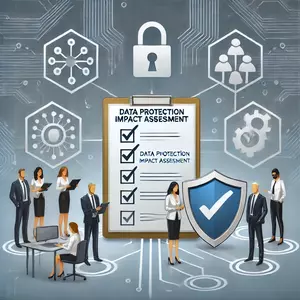In today’s interconnected world, data security has become a critical concern for individuals and organisations alike. With increasing threats from cyberattacks, data breaches, and unauthorised access, safeguarding sensitive information is paramount. Here, we explore the best practices for data security in the digital age, ensuring you stay ahead in protecting your digital footprint.
Understanding the Importance of Data Security
Data security involves safeguarding digital information from unauthorised access, theft, or damage. As technology evolves, so do the tactics of cybercriminals, making it essential to adopt proactive measures. Without robust security protocols, personal and corporate data can be compromised, leading to financial loss, reputational damage, and legal repercussions.
1. Implement Strong Passwords and Authentication
One of the simplest yet most effective ways to enhance data security is by using strong, unique passwords. Combine uppercase letters, lowercase letters, numbers, and special characters. Avoid using personal information such as names or birthdates.
Enable two-factor authentication (2FA) wherever possible. This adds an extra layer of security, ensuring that even if a password is compromised, the account remains protected.
2. Regularly Update Software and Systems
Outdated software is a common entry point for cyberattacks. Regularly updating operating systems, applications, and antivirus software ensures your systems are equipped to counter the latest threats.
Automate updates where possible to reduce the risk of missing critical patches.
3. Educate Employees and Stakeholders
For organisations, employees are often the first line of defence against cyber threats. Conduct regular training sessions on recognising phishing attempts, handling sensitive data, and following secure communication protocols.
Individuals should also stay informed about emerging cybersecurity threats and best practices for personal data security.
4. Use Encrypted Connections
Always use secure connections, especially when accessing sensitive data. Ensure your website and email communications are encrypted using SSL certificates. For personal use, a Virtual Private Network (VPN) can add a layer of security when browsing or accessing data on public Wi-Fi.
5. Backup Data Regularly
Data loss can occur from hardware failures, natural disasters, or cyberattacks. Regularly backing up data ensures you have a safety net. Use both physical storage devices and cloud solutions for comprehensive protection.
6. Limit Data Access
For organisations, implement role-based access controls to restrict data access to authorised personnel only. Regularly review permissions and revoke access when employees leave the organisation.
On a personal level, be cautious about the information you share online and adjust privacy settings on social media and other platforms.
7. Invest in Advanced Security Tools
Firewalls, antivirus programs, and intrusion detection systems provide essential protection against cyber threats. For businesses, consider consulting with cybersecurity experts to develop customised solutions tailored to your needs.
Staying Vigilant in the Digital Age
Data security is not a one-time effort but a continuous process. By staying vigilant and adopting these best practices, individuals and organisations can become true guardians of privacy in the digital age.











